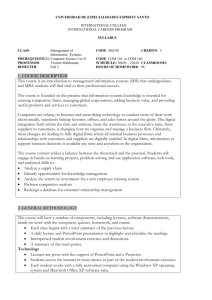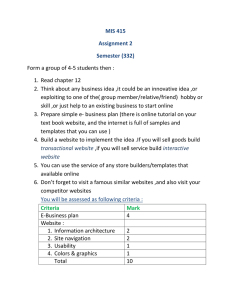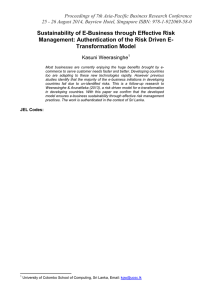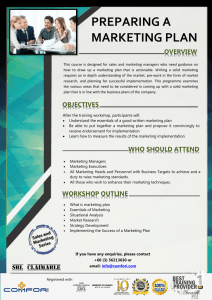laudon ess10e spp 2 0
advertisement
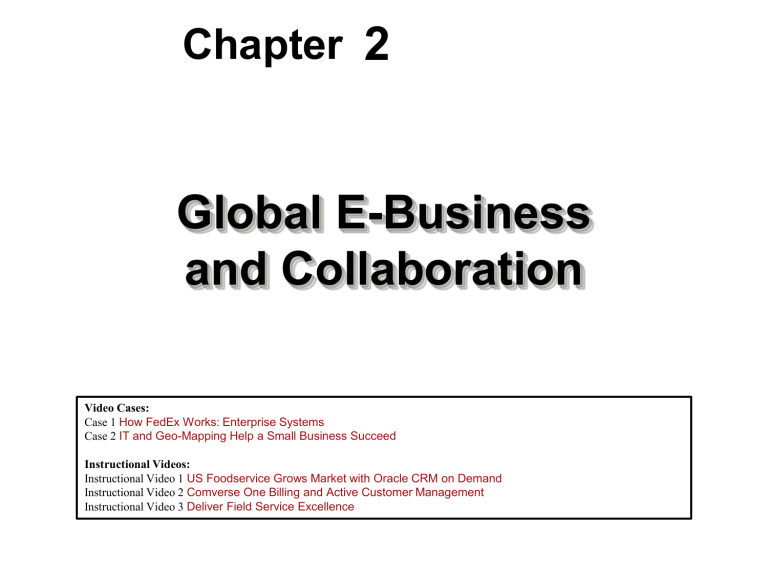
Chapter 2 Global E-Business and Collaboration Video Cases: Case 1 How FedEx Works: Enterprise Systems Case 2 IT and Geo-Mapping Help a Small Business Succeed Instructional Videos: Instructional Video 1 US Foodservice Grows Market with Oracle CRM on Demand Instructional Video 2 Comverse One Billing and Active Customer Management Instructional Video 3 Deliver Field Service Excellence Essentials of Management Information Systems Chapter 2 Global E-Business and Collaboration STUDENT LEARNING OBJECTIVES • What are the major features of a business that are important for understanding the role of information systems? • How do systems serve different management groups in a business? • How do systems that link the enterprise improve organizational performance? Essentials of Management Information Systems Chapter 2 Global E-Business and Collaboration STUDENT LEARNING OBJECTIVES • Why are systems for collaboration and teamwork so important and what technologies do they use? • What is the role of the information systems function in a business? Essentials of Management Information Systems Chapter 2 Global E-Business and Collaboration America’s Cup 2010: USA Wins with Information Technology • Problem: Using IT to win the America’s Cup race • Solutions: New technology for physical engineering of boat; sensor network to monitor conditions, and data analysis to improve the performance of sails and more Essentials of Management Information Systems Chapter 2 Global E-Business and Collaboration America’s Cup 2010: USA Wins with Information Technology • IBM Oracle Database 11g data management software provided real time analysis of boat’s sensor data • Demonstrates IT’s role in fostering innovation and improving performance • Illustrates the benefits of using data analysis and IT to improve products Essentials of Management Information Systems Chapter 2 Global E-Business and Collaboration America’s Cup 2010: USA Wins with Information Technology Essentials of Management Information Systems Chapter 2 Global E-Business and Collaboration Components of a Business Business: formal organization that makes products or provides a service in order to make a profit Organizing a Business: Basic Business Functions • Four basic business functions • Manufacturing and production • Sales and marketing • Finance and accounting • Human resources Essentials of Management Information Systems Chapter 2 Global E-Business and Collaboration Components of a Business The Four Major Functions of a Business Every business, regardless of its size, must perform four functions to succeed. It must produce the product or service; market and sell the product; keep track of accounting and financial transactions; and perform basic human resources tasks, such as hiring and retaining employees. Figure 2-1 Essentials of Management Information Systems Chapter 2 Global E-Business and Collaboration Components of a Business Five Basic Business Entities • Suppliers • Customers • Employees • Invoices/payments • Products and services Essentials of Management Information Systems Chapter 2 Global E-Business and Collaboration Components of a Business Business Processes • Logically related set of tasks that define how specific business tasks are performed • The tasks each employee performs, in what order, and on what schedule • E.g., steps in hiring an employee • Some processes tied to functional area • Sales and marketing: identifying customers • Some processes are cross-functional • Fulfilling customer order Essentials of Management Information Systems Chapter 2 Global E-Business and Collaboration Components of a Business The Order Fulfillment Process Fulfilling a customer order involves a complex set of steps that requires the close coordination of the sales, accounting, and manufacturing functions. Figure 2-2 Essentials of Management Information Systems Chapter 2 Global E-Business and Collaboration Components of a Business Managing a Business and Firm Hierarchies • Firms coordinate work of employees by developing hierarchy in which authority is concentrated at top. Senior management Middle management Operational management Knowledge workers Data workers Production or service workers • Each group has different needs for information. Essentials of Management Information Systems Chapter 2 Global E-Business and Collaboration Components of a Business Levels in a Firm Business organizations are hierarchies consisting of three principal levels: senior management, middle management, and operational management. Information systems serve each of these levels. Scientists and knowledge workers often work with middle management. Figure 2-3 Essentials of Management Information Systems Chapter 2 Global E-Business and Collaboration Components of a Business The Business Environment • Global environment factors • Technology and science • Economy • Politics • International change • Immediate environment factors • Customers • Suppliers • Competitors • Regulations • Stockholders Essentials of Management Information Systems Chapter 2 Global E-Business and Collaboration Components of a Business The Business Environment To be successful, an organization must constantly monitor and respond to—or even anticipate—developments in its environment. A firm’s environment includes specific groups with which the business must deal directly, such as customers, suppliers, and competitors as well as the broader general environment, including socioeconomic trends, political conditions, technological innovations, and global events. Figure 2-4 Essentials of Management Information Systems Chapter 2 Global E-Business and Collaboration Components of a Business The Role of Information Systems in a Business • Firms invest in information systems in order to: • Achieve operational excellence • Develop new products and services • Attain customer intimacy and service • Improve decision making • Promote competitive advantage • Ensure survival Essentials of Management Information Systems Chapter 2 Global E-Business and Collaboration Types of Business Information Systems Systems for Management Decision Making and Business Intelligence • Transaction processing systems (TPS) • Keep track of basic activities and transactions of organization • Systems for business intelligence • Address decision-making needs of all levels of management • Management information systems (MIS) • Decision support systems (DSS) • Executive support systems (ESS) Essentials of Management Information Systems Chapter 2 Global E-Business and Collaboration Types of Business Information Systems • Transaction processing systems: • Serve operational managers • Principal purpose is to answer routine questions and to track the flow of transactions through the organization • E.g., inventory questions, granting credit to customer • Monitor status of internal operations and firm’s relationship with external environment • Major producers of information for other systems • Highly central to business operations and functioning Essentials of Management Information Systems Chapter 2 Global E-Business and Collaboration Types of Business Information Systems A Payroll TPS A TPS for payroll processing captures employee payment transaction data (such as a timecard). System outputs include online and hard copy reports for management and employee paychecks. Figure 2-5 Essentials of Management Information Systems Chapter 2 Global E-Business and Collaboration Types of Business Information Systems • Management information systems: • Provide middle managers with reports on firm’s performance • To monitor firm and help predict future performance • Summarize and report on basic operations using data from TPS • Provide weekly, monthly, annual results, but may enable drilling down into daily or hourly data • Typically not very flexible systems with little analytic capability Essentials of Management Information Systems Chapter 2 Global E-Business and Collaboration Types of Business Information Systems How MIS Obtain Their Data from TPS Figure 2-6 Essentials of Management Information Systems Chapter 2 Global E-Business and Collaboration Types of Business Information Systems Sample MIS Report This report, showing summarized annual sales data, was produced by the MIS in Figure 2-6. Figure 2-7 Essentials of Management Information Systems Chapter 2 Global E-Business and Collaboration Types of Business Information Systems Interactive Session: Technology Can Airlines Solve Their Baggage Handling? • Read the Interactive Session and then discuss the following questions: • What types of transactions do baggage handling systems handle? • What are the people, organization, and technology components of baggage handling systems? • What is the problem these baggage handling systems are trying to solve? What is the business impact of this problem? Are today’s handling systems a solution? • What kinds of management reports are generated from these systems? Essentials of Management Information Systems Chapter 2 Global E-Business and Collaboration Types of Business Information Systems • Decision support systems (DSS): • Serve middle managers • Support nonroutine decision making • E.g., What is impact on production schedule if December sales doubled? • Often use external information as well from TPS and MIS • Model driven DSS • Voyage-estimating systems • Data driven DSS • Intrawest’s marketing analysis systems Essentials of Management Information Systems Chapter 2 Global E-Business and Collaboration Types of Business Information Systems Voyage-Estimating Decision Support System This DSS operates on a powerful PC. It is used daily by managers who must develop bids on shipping contracts. Figure 2-8 Essentials of Management Information Systems Chapter 2 Global E-Business and Collaboration Types of Business Information Systems • Executive support systems (ESS): • Serve senior managers • Address strategic issues and long-term trends • E.g., What products should we make in five years? • Address nonroutine decision making • Provide generalized computing capacity that can be applied to changing array of problems • Draw summarized information from MIS, DSS, and data from external events • Typically use portal with Web interface, or digital dashboard, to present content Essentials of Management Information Systems Chapter 2 Global E-Business and Collaboration Types of Business Information Systems Digital Dashboard A digital dashboard delivers comprehensive and accurate information for decision making often using a single screen. The graphical overview of key performance indicators helps managers quickly spot areas that need attention. Essentials of Management Information Systems Chapter 2 Global E-Business and Collaboration Types of Business Information Systems Interactive Session: Organizations Piloting Valero with Real-Time Management • Read the Interactive Session and then discuss the following questions: • What people, organization, and technology issues had to be addressed when developing Valero’s dashboard? • What measurements of performance do dashboards display? What management decisions would benefit from Valero’s dashboard? • What kinds of information systems are required for Valero to operate its refining dashboard? • How effective are Valero’s dashboards in helping management? • Should Valero develop a dashboard to measure the factors in its environment which it doesn’t control? Essentials of Management Information Systems Chapter 2 Global E-Business and Collaboration Types of Business Information Systems Systems for Linking the Enterprise • Enterprise applications • Systems that span functional areas, focus on executing business processes across the firm, and include all levels of management • Four major types 1. Enterprise systems 2. Supply chain management systems 3. Customer relationship management systems 4. Knowledge management systems Essentials of Management Information Systems Chapter 2 Global E-Business and Collaboration Types of Business Information Systems Enterprise Application Architecture Enterprise applications automate processes that span multiple business functions and organizational levels and may extend outside the organization. Figure 2-9 Essentials of Management Information Systems Chapter 2 Global E-Business and Collaboration Types of Business Information Systems Enterprise Systems • Also called enterprise resource planning (ERP) systems • Integrate data from key business processes into single system • Speed communication of information throughout firm • Enable greater flexibility in responding to customer requests, greater accuracy in order fulfillment • Enable managers to assemble overall view of operations Essentials of Management Information Systems Chapter 2 Global E-Business and Collaboration Types of Business Information Systems Supply Chain Management Systems • Manage relationships with suppliers, purchasing firms, distributors, and logistics companies • Manage shared information about orders, production, inventory levels, and so on • Goal is to move correct amount of product from source to point of consumption as quickly as possible and at lowest cost • Type of interorganizational system: • Automating flow of information across organizational boundaries Essentials of Management Information Systems Chapter 2 Global E-Business and Collaboration Types of Business Information Systems Customer Relationship Management Systems • Help manage relationship with customers • Coordinate business processes that deal with customers in sales, marketing, and customer service • Goals: • Optimize revenue • Improve customer satisfaction • Increase customer retention • Identify and retain most profitable customers Essentials of Management Information Systems Chapter 2 Global E-Business and Collaboration Types of Business Information Systems Knowledge Management Systems • Manage processes for capturing and applying knowledge and expertise • Collect relevant knowledge and make it available wherever needed in the enterprise to improve business processes and management decisions • Link firm to external sources of knowledge Essentials of Management Information Systems Chapter 2 Global E-Business and Collaboration Types of Business Information Systems Intranets and Extranets • Technology platforms that increase integration and expedite the flow of information • Intranets: • Internal networks based on Internet standards • Often are private access area in company’s Web site • Extranets: • Company Web sites accessible only to authorized vendors and suppliers • Facilitate collaboration Essentials of Management Information Systems Chapter 2 Global E-Business and Collaboration Types of Business Information Systems E-Business, E-Commerce, and E-Government • E-business: • Use of digital technology and Internet to drive major business processes • E-commerce: • Subset of e-business • Buying and selling goods and services through Internet • E-government: • Using Internet technology to deliver information and services to citizens, employees, and businesses Essentials of Management Information Systems Chapter 2 Global E-Business and Collaboration Systems for Collaboration and Teamwork What Is Collaboration? • Growing Importance of collaboration: • Changing nature of work • Growth of professional work • Changing organization of the firm • Changing scope of the firm • Emphasis on innovation • Changing culture of work and business Essentials of Management Information Systems Chapter 2 Global E-Business and Collaboration Systems for Collaboration and Teamwork Business Benefits of Collaboration and Teamwork • Recent surveys find that investment in collaboration technology can return large rewards, especially in: • Sales and marketing • Research and development • Older, “command and control,” hierarchical management allowed little horizontal communication • Today, businesses rely more on teams at all levels Essentials of Management Information Systems Chapter 2 Global E-Business and Collaboration Systems for Collaboration and Teamwork Figure 2-10 Requirements for Collaboration Successful collaboration requires an appropriate organizational structure and culture, along with appropriate collaboration technology. Essentials of Management Information Systems Chapter 2 Global E-Business and Collaboration Systems for Collaboration and Teamwork Tools and Technologies for Collaboration and Teamwork • • • • • E-mail and instant messaging (IM) Social networking Wikis Virtual worlds Internet-based collaboration environments • Virtual meeting systems (telepresence) • Google Apps/Google Sites • Microsoft SharePoint • Lotus Notes Essentials of Management Information Systems Chapter 2 Global E-Business and Collaboration The Information Systems Function in Business Socialtext's enterprise social networking products including microblogging, blogs, wikis, profiles, and social spreadsheets enable employees to share vital information and work together in real time. Built on a flexible Web-oriented architecture, Socialtext integrates with virtually any traditional system of record, such as CRM and ERP, enabling companies to discuss, collaborate, and take action on key business processes. Essentials of Management Information Systems Chapter 2 Global E-Business and Collaboration Systems for Collaboration and Teamwork The Time/Space Collaboration Tool Matrix Collaboration technologies can be classified in terms of whether they support interactions at the same or different time or place, and whether these interactions are remote or co-located. Figure 2-11 Essentials of Management Information Systems Chapter 2 Global E-Business and Collaboration Systems for Collaboration and Teamwork Evaluating and Selecting Collaboration Software Tools 1. What are your firm’s collaboration challenges? 2. What kinds of solutions are available? 3. Analyze available products’cost and benefits. 4. Evaluate security risks. 5. Consult users for implementation and training issues. 6. Select candidate tools and evaluate vendors. Essentials of Management Information Systems Chapter 2 Global E-Business and Collaboration The Information Systems Function in Business The Information Systems Department • Programmers • Systems analysts • Principle liaisons to rest of firm • Information systems managers • Leaders of teams of programmers and analysts, project managers, physical facility managers, telecommunications managers, database specialists, managers of computer operations, and data entry staff • Senior managers: CIO, CPO, CSO, CKO • End users Essentials of Management Information Systems Chapter 2 Global E-Business and Collaboration The Information Systems Function in Business Information Systems Services • • • • • • • • • Computing services Telecommunications services Data management services Application software services Physical facilities management services IT management services IT standards services IT educational services IT research and development services
